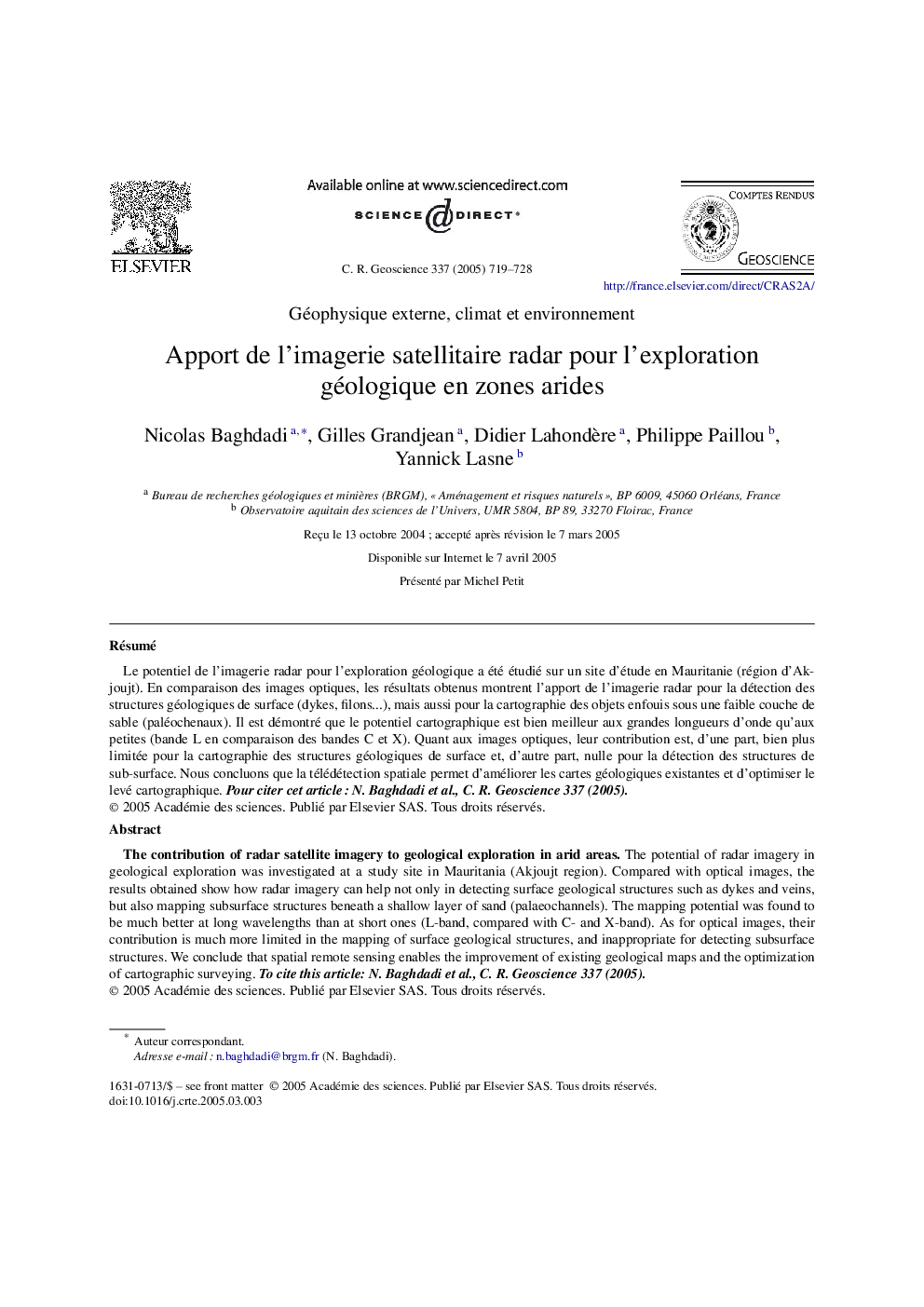| Article ID | Journal | Published Year | Pages | File Type |
|---|---|---|---|---|
| 9461945 | Comptes Rendus Geoscience | 2005 | 10 Pages |
Abstract
The potential of radar imagery in geological exploration was investigated at a study site in Mauritania (Akjoujt region). Compared with optical images, the results obtained show how radar imagery can help not only in detecting surface geological structures such as dykes and veins, but also mapping subsurface structures beneath a shallow layer of sand (palaeochannels). The mapping potential was found to be much better at long wavelengths than at short ones (L-band, compared with C- and X-band). As for optical images, their contribution is much more limited in the mapping of surface geological structures, and inappropriate for detecting subsurface structures. We conclude that spatial remote sensing enables the improvement of existing geological maps and the optimization of cartographic surveying. To cite this article: N. Baghdadi et al., C. R. Geoscience 337 (2005).
Related Topics
Physical Sciences and Engineering
Earth and Planetary Sciences
Earth and Planetary Sciences (General)
Authors
Nicolas Baghdadi, Gilles Grandjean, Didier Lahondère, Philippe Paillou, Yannick Lasne,
